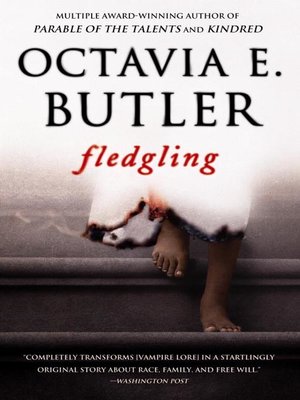

While its vision is extreme, there is plenty that feels within the bounds of possibility: resources are increasingly scarce, the planet is boiling, religious fundamentalism is rife, the middle classes live in walled-off enclaves.

In some respects, we’ve beaten her to it: a sequel to 1993’s Parable of the Sower, Parable of the Talents is set in what is still the future, 2032. Like much of her writing, Butler’s book was a warning about where the US and humanity in general might be heading. Written by Octavia E Butler, it was published in 1998, two decades before the inauguration of the 45th President of the United States. You might think he sounds familiar – but the character in question is Texas Senator Andrew Steele Jarret, the fictional presidential candidate who storms to victory in a dystopian science-fiction novel titled Parable of the Talents. The story of cannibalism that came true The fiction that predicted space travel How much of this rhetoric he actually believes and how much he spouts “just because he knows the value of dividing in order to conquer and to rule” is at once debatable, and increasingly beside the point, as he strives to return the country to a “simpler” bygone era that never actually existed. He accuses, without grounds, whole groups of people of being rapists and drug dealers. When his supporters form mobs and burn people to death, he condemns their violence “in such mild language that his people are free to hear what they want to hear”.

According to his opponent, he’s a demagogue a rabble-rouser a hypocrite. The Silks fear the genetic “marriage” of human and Ina DNA, which is the basis of Shori’s existence.It’s campaign season in the US, and a charismatic dark horse is running with the slogan ‘make America great again’. Although America’s anti-miscegenation laws were struck down in 1967, widespread fear of interracial relationships and the “tainting” of the white race still exist today. This alludes to the historical fear of miscegenation, which led to the criminalization of interracial marriage. In a racist twist on the “slippery slope” fallacy, the Silks also believe that Shori’s Blackness will somehow lead to harmful genetic modifications of their species. Although Shori’s dark skin allows her to stay awake during the day and withstand the sun longer than pale Ina, the Silks denounce the genetic experiments that made her possible. They consider humans-even symbionts who are needed for Ina survival-to be beneath Ina and no better than animals. The Silk family, Katharine Dahlman, and their sympathizers believe that Shori Matthews’s (Black) human DNA goes against the very fabric of the “superior” Ina species. Butler uses the Ina, a vampiric species closely related to humans, to show how racism is so systemic that it can even transcend species. Fledgling is primarily an allegory meant to illustrate the deadly power of white supremacy in our society.


 0 kommentar(er)
0 kommentar(er)
